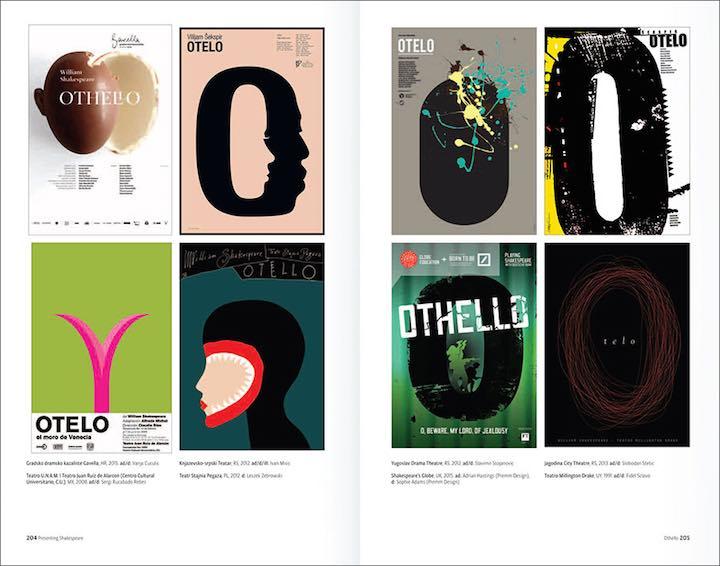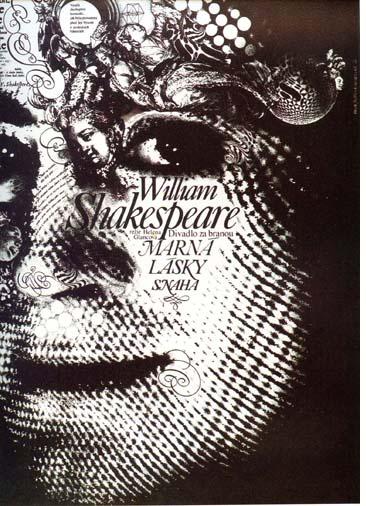Presenting Shakespeare through Posters
With Presenting Shakespeare, Mirko Ilic and Steven Heller have gathered over a thousand posters from around the globe to show why Shakespeare has become the most important writer in the English language.
In a lively and entertaining introduction, the two demonstrate the power of branding, from the dawn of the poster to the banner ads that invade today's desktops. While they're at it they explain the derivation of the words "poster" and "handbill," revealing the craft origins of these terms.
The organization of the book is a stroke of genius. Posters for the most popular plays, Hamlet, Lear, Romeo and Juliet, for example, get their own chapters. Thereafter, plays by type (tragedies, comedies, the histories, the tragicomedies) are grouped together. Each chapter begins with an introduction that points to the themes of the play that have lent symbolic content to the art of advertising--the crown, for example, in King Lear; the skull in Hamlet; the snake in Anthony and Cleopatra, and blood everywhere, never more so than in Macbeth. A spread in the Romeo and Juliet section demonstrates how effective two-color printing can be, given a good designer and the color red.

There are many ways to study the posters in this collection. Try looking for examples done strictly with typography; examples using photography; examples using calligraphy; examples with a single, centered image; with an overall design; with pastel colors. You can study the myriad ways in which a crown can be represented. You get the idea.

If you want to study how themes of sexual politics have played out over
the last 200 or so years, look no further than Measure for Measure and Othello.
Love, deceit, dishonor--and trickery--are the engines that
propel A Midsummer Night's Dream, whose complex plot invites graphic interpretation centered on the hapless donkey figure of Bottom, or the moon in its phases, or the two-faced figure.
Sculptural portraits from antiquity are bedrock for Julius Caesar (whose likeness is more well-established than that of the Bard himself).
Occasionally, a star performer (for example, Alan Cumming) is given the star treatment (in this case by Albert Watson) for a production of Macbeth, here, by the National Theater of Scotland, in 2012. Hail to the Highlanders!
The book is irresistible on many levels, not least for the reading, which includes a preface by Julie Taymore. Presenting Shakespeare (Princeton Architectural Press 2016) Mirko Ili and Steven Heller, is now in stores. Info Info Info





